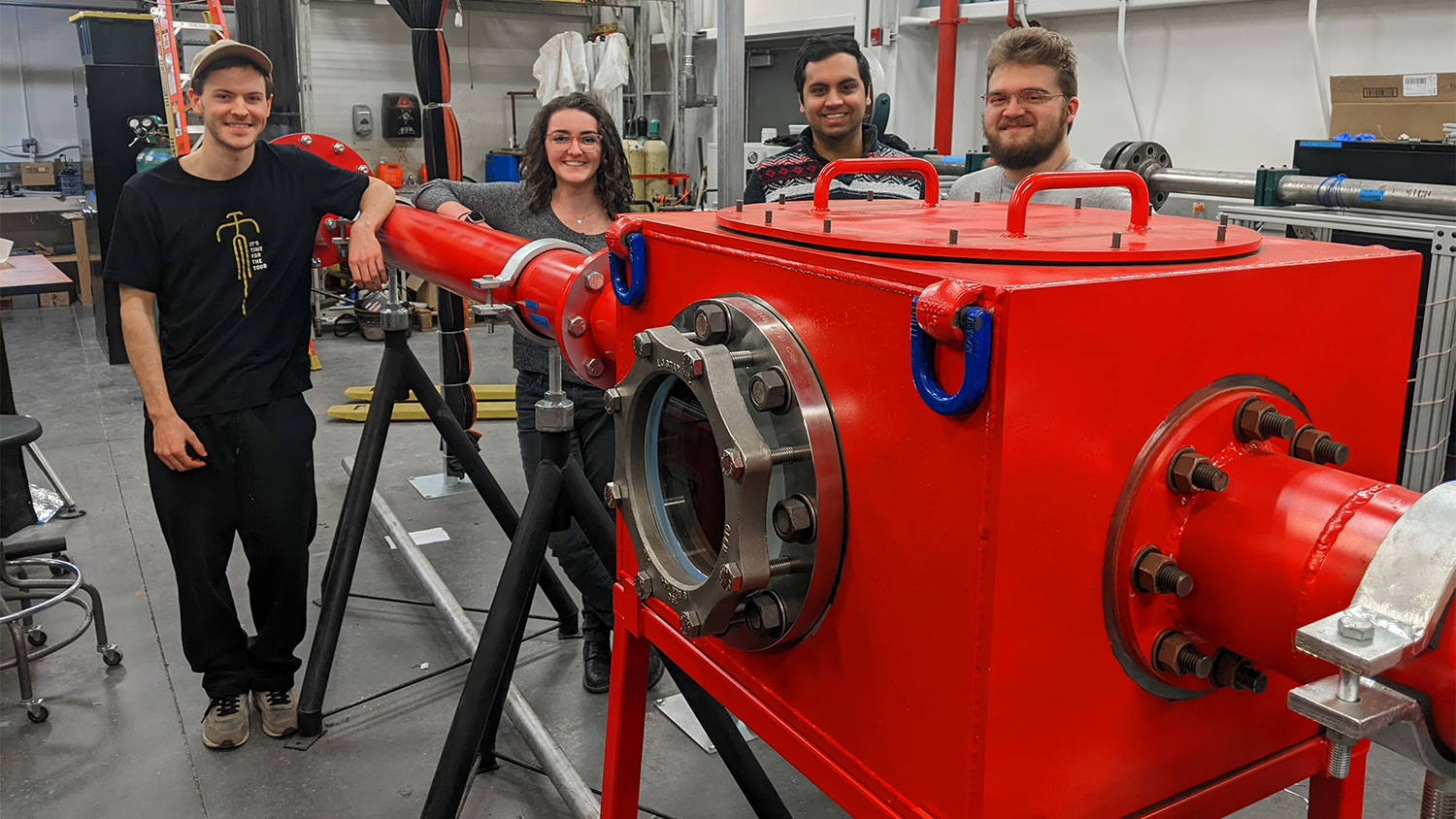NC State University research capabilities are a lot faster now that a long-duration hypersonic wind tunnel is officially running.
Hypersonic wind tunnels reach speeds up to Mach 6, or six times the speed of sound. At hypersonic speeds, it would take just three hours to fly around the globe. This tunnel is capable of operating for up to 15 seconds at Mach 6, which is enough time to simulate real flight operations and component behaviors.
“This facility is one of a kind in the entire nation,” said Venkat Narayanaswamy, professor in the Department of Mechanical and Aerospace Engineering (MAE). “There isn’t another university-scale facility that provides this much versatility to perform a wide range of scientific and engineering investigations, and approaches real flight conditions as closely as our facility does. This opens a new door for the next generation of research.”
Reimagining flight
The Department of Defense (DoD) has started two projects geared toward developing the next generation of aircraft that use smart materials to fly faster, turn and descend more quickly, and operate with better fuel efficiency.
The first is focused on developing the next generation of hypersonic platforms that can change their shape during flight, called morphing platforms. It is sponsored by the Surface Morphing and Adaptive Structures for Hypersonics (SMASH) program, which is a consortium comprising national labs and universities put together by the Army Research Laboratory and Naval Research Laboratory.
“We no longer talk about rigid materials,” Narayanaswamy said. “We look to employ smart materials and research how we can integrate advancements that are happening in materials and electronics into hypersonic technologies and take them to the extreme.”
For the second project, sponsored by the DoD’s Joint Hypersonic Transition Office, researchers are building the next generation of propulsion systems that will first be used by the military before transitioning to commercial aircraft to speed up passenger flight.

“Where we are in hypersonic and space technologies is where the internet was in the 1960s,” Narayanaswamy said. “Back then, the internet was meant for communication between soldiers and military personnel in the battlefront where they wanted a secure way to pass on information. Once that technology entered the civilian world for day-to-day applications, you cannot imagine a world without the internet. Similarly, once we transition our hypersonic technologies to a civilian world, we are going to completely reimagine the way we think about travel and data in a way that will completely change our daily lives.”
Emma Cavanaugh, a Ph.D. student in aerospace engineering, is working on a SMASH project and developing next-generation morphing technologies by fusing the cutting-edge in smart materials with hypersonic propulsion and controls. Her research is focused on inlet design optimization, with an emphasis on determining the best inlet geometry to accommodate varying speed conditions.
The inlet brings the air into an air-breathing propulsion system, which uses atmospheric air to generate exhaust gasses for propulsion.
“An inlet for an airbreathing propulsion system is the first place that flow is seen,” Cavanaugh explained. “This portion of the system is primarily responsible for compressing the incoming air. Once compressed, the air goes through a series of decelerations and accelerations throughout the isolator, combustion chamber and nozzle such that sufficient thrust is generated for the aircraft to reach supersonic and hypersonic speeds. These effects can be further amplified by altering the geometry associated with the propulsion system.”
Aircraft components like inlets are designed to work most efficiently at specified Mach speeds. But in real-life conditions, those speeds can vary quite substantially.
“If we can make some kind of inlet that has the ability to accommodate for those different conditions then that’s going to be of a lot greater use for industry and government,” she said.
Building for industry
While there are exciting developments to come from the hypersonic wind tunnel, students also gained valuable experiences from building it. They had to meet extremely high standards throughout the process.
In the final weeks, the student team was obsessing over all the small details.
Shaan Stephen, a master’s student in MAE who has worked on the tunnel since he was an undergraduate student, said the most important lesson he learned is that documentation is critical.
When the students operated the tunnel for the first time, they were prepared for a loud noise, like one made by the supersonic wind tunnel.
“It didn’t make a loud sound at all,” Stephen said. “We were all expecting that and confused if it ran or not, but after we realized it did and we actually saw the shock wave, we were pretty excited.”
Narayanaswamy had a different reaction to the lack of noise, calling it “reassuringly quiet.” Loud noise indicates high pressure, and with a functioning vacuum system, the pressure should be low when the tunnel reaches hypersonic speeds.
“If it were noisy, that means our tunnel did not work at all,” he said.
Despite the differing reactions to the noise levels, Narayanaswamy and the students shared similar reactions to the tunnel’s first run: excitement, relief and pride.
“It’s such an intricate piece of engineering, and all credit to the student team,” Narayanaswamy said. “Their due diligence and being meticulous, that’s something I was able to appreciate in the students. That’s what I’m really proud of: the fact that they could remain enthusiastic despite the delays and difficulties during the facility construction.”
Related video
- Categories:



